Tim from www.cubenmaker.com recently sent me these pictures of his newest creation, which is version two of his lightweight pontoon katayak! The text below is Tim’s, with only minor editing on my part. Click to enlarge the pictures, and also check out Tim’s website to see several more lightweight boats he has designed, as well as ultralight tents and other projects! – Matt
I recently finished my latest pontoon kayak (or catayak – CATAmaran kaYAK) using red 210D fabric. I did one test paddle so far and it looks stiff enough and paddled very well. I plan a few tweaks to the carbon frame to stiffen it a bit more but it’s pretty good as is.
My first catayak was a new experiment for me so I was conservative, using 14 inch pontoons and 1 1/8 inch diameter tubing for the frame. The basic concept was proven on a 57 km paddling trip last summer, so this year I wanted to test the lower limit of pontoon diameter and frame tube size with a second boat, to see how light I could go.
The pontoons and frame straps are all made with the 210D fabric. For the straps I used 1 inch wide strips with plastic D rings fastened to the frame using Velcro One Wrap. The frame uses a combination of 3/4 inch carbon tubes and 5/8 inch aluminum Easton tent poles. The frame tubes are joined with 3/4 inch nylon hose tees and 5/8 inch carbon ferrules. The seat base uses 3 oz Cuben Fiber/polyester hybrid (Dyneema Composite Fabric). The inflatable seat is made with a 5 oz TPU fabric. I used a bent tent pole for the seat back support.
As I expected, this new boat flexes more when I sit on it, but seems to paddle about as well as the first one. With a 36 inch beam it’s very stable, and at nearly 13 feet long it’s reasonably fast. The skeg attached to the rear cross bar makes it track pretty well. Total weight is 7.9 pounds, which gets it into packraft territory weight-wise. I plan to test it properly on the same trip I do most years up near Powell River, BC.
I used Blender 3D modelling software to create the pontoon patterns.
I also recently played around with an idea for topping up pressure a bit beyond oral limits without using a conventional pump and made a short video I put on Youtube. The link is https://www.youtube.com/watch?
The catayak paddles pretty well. The skeg also makes a difference with tracking. The way I know it makes a difference is on my trip last summer with the first catayak, a little while after leaving the beach on the first lake I noticed the boat was yawing back and forth all of a sudden. I suddenly realised: I’ve lost the skeg! Sure enough, I looked around and it had fallen off. I could tell, just by the feel of the boat changing. Fortunately being mostly wood, it floated and I was able to go back and pick it up.
The new pontoon diameter is 10 inches. I originally considered trying 9 inches, but chickened out. Having tried them out now, I think 10 inches is as small as I would go. With the 14 inch pontoons, mouth pressure was fine, but the 10 inch ones feel like they could use a bit more pressure, hence the rubber pump thingy. However, the first test paddle was with mouth pressure only, and it was ok.
Tim
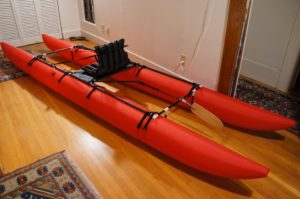
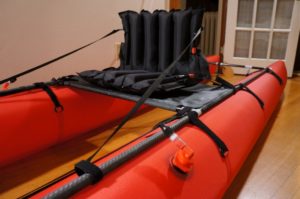
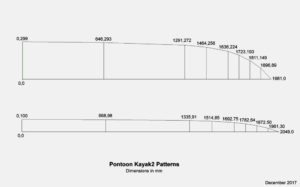
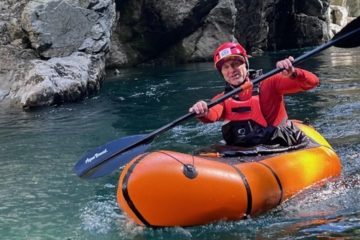

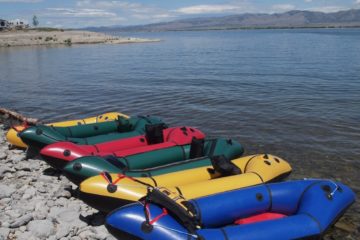
2 Comments
Tim Evans · April 21, 2021 at 1:09 pm
Sorry for the late response, but I just saw your comment today, April 21, 2021. My catyaks are not suitable for more than one person and not very practical as a yacht tender since the assembly time is too long and the dimensions to wide for most boat decks.
jerry jaksha · May 13, 2019 at 4:41 pm
Hi Tim
Your new cat looks much like one I built of pvc tubes a few years back, but much more portable.
I would like to make an inflatable cat to use also as a stable dinghy that I can easily lift up on the sailboat. My wife would prefer to be aboard as well as me, so it would have to work with 400#, but only from shore to the boat. 10′ long is max, so one question is what diameter tube would you recommend.
Would you use the 210 denier material?